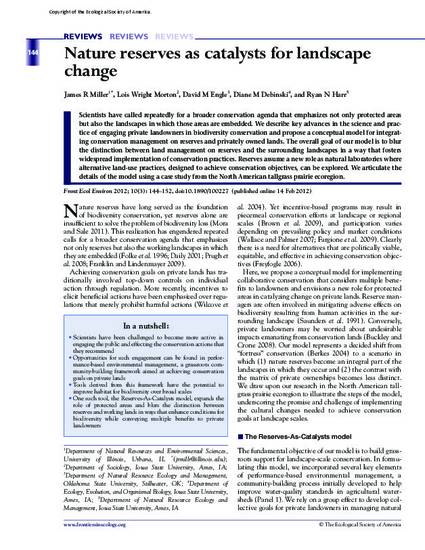
Scientists have called repeatedly for a broader conservation agenda that emphasizes not only protected areas but also the landscapes in which those areas are embedded. We describe key advances in the science and practice of engaging private landowners in biodiversity conservation and propose a conceptual model for integrating conservation management on reserves and privately owned lands. The overall goal of our model is to blur the distinction between land management on reserves and the surrounding landscapes in a way that fosters widespread implementation of conservation practices. Reserves assume a new role as natural laboratories where alternative land-use practices, designed to achieve conservation objectives, can be explored. We articulate the details of the model using a case study from the North American tallgrass prairie ecoregion.
Available at: http://works.bepress.com/diane_debinski/30/

This article is from Frontiers in Ecology and the Environment 10 (2012): 144, doi:10.1890/100227.